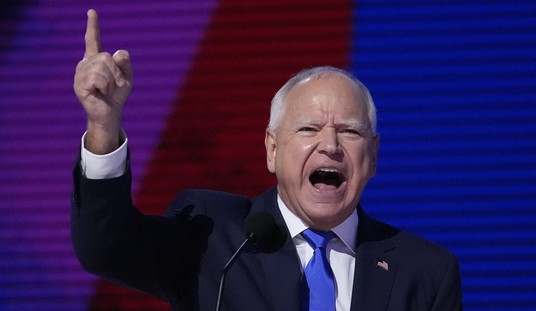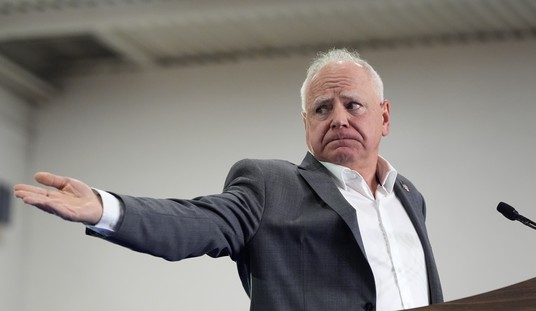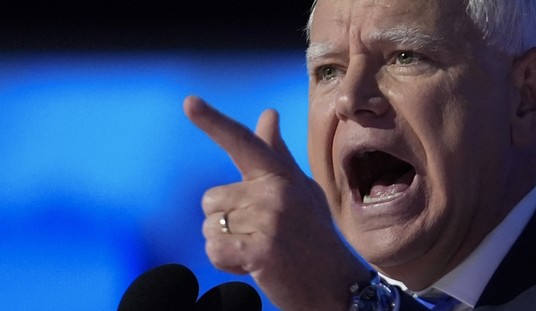Many of you will say, point-blank, that they no longer care about Major League Baseball. I’m on the cusp of feeling that way. Decisions the league has made in recent years have seemingly been based on political perspectives, as seen in the decision behind the 2021 All-Star Game, for example.
Related: They Called It Jim Crow, Then Georgia Voters Proved Them Wrong
But as I’ve said before, I’ve loved baseball my entire life. There was a long period in my life when I could accurately name any player’s statistics at any point of the season. I lived and died baseball. Like many, the ’94 strike nearly pushed me away.
I say this only because I almost feel the same way as the rest of you who have walked away. But, like a forlorn lover, I can’t. Outside of personal relationships, my biggest loves are baseball and Bigfoot. I’ve written about the big guy here, and I’m willing to receive the slings and arrows of insults and descriptors of poppycock. But, using a phrase I abhor, it is what it is.
What follows is a list of players I believe have been overlooked and appreciated in baseball history. All the players on this list have statistics that are very comparable to those of guys in the Hall of Fame, yet they’re not.
The only way to make judgments on the quality of careers is somehow to bypass the emotional appeal those players hold over us.
In my opinion, maybe shared by many others, it boils down to a single question: How do you compare players who aren’t in the Hall of Fame to those who are objectively? Statistics, as we all know so well, can be deceptive—does a player who hit .340 in 1935 reach that same average in 1985?
My Method
No single stat is magically able to produce objectivity. For this article, I’m using Wins Above Replacement (WAR). MLB.com defines WAR as:
WAR measures a player's value in all facets of the game by deciphering how many more wins he's worth than a replacement-level player at his same position (e.g., a Minor League replacement or a readily available fill-in free agent).
For example, suppose a shortstop and a first baseman offer the same overall production (on offense, defense, and the basepaths). In that case, the shortstop will have a better WAR because his position sees a lower level of production from replacement-level players.
I know many more writers have used more advanced statistics than this, but I want something relatively simple. I attempted to compile a top list of non-steroid-using players who have been overlooked for the Hall of Fame for various reasons. With one single exception**, I tried to make this list as emotion-free as possible.
This is by no means a definitive list. I’m willing to admit that many players also deserve considerable consideration to be mentioned. All the players’ statistics come from Baseball Reference.
This was my methodology: I examined each position and sorted the list by WAR, noting the highest WAR, and then searched to see if the player is a resident of the Hall of Fame. Next, I subtracted the next highest WAR belonging to a Hall of Famer. That difference, I hope, is a fair determination for the player’s ranking. For reference, I have listed the player with the highest WAR, along with players with lower WAR and those in the Hall.
Let’s use First Baseman Cecil Cooper as an example. Coop earned a WAR of 36.0. Willie McCovey is the closest Hall of Famer above Cooper at first base with a WAR of 64.5. The difference is 28.5.
Cecil Cooper’s WAR: 36.0. Closest Hall of Famer with Higher WAR: Willie McCovey 64.5 (64.5 – 36 = 28.8)
I disregarded some players, such as Pete Rose, whom I didn’t include because of the preponderance of evidence that Rose bet on his own team. The same holds for alleged steroid use.
I look forward to your disagreements. Remember, opinions are like Adam Schiff; we all have one, so please be respectful.
Also, for those who aren’t familiar with baseball’s abbreviations, I’m using the following:
- Hall of Famer: HoF
- Batting Average: BA
- On Base Percentage: OBP
- Runs Batted In: RBI
- Voters: 394 members of the Baseball Writers Association of America (BBWAA) cast ballots for eligible players. To win induction, a player must receive 75% of the votes.
**Shoeless Joe Jackson
This is one of the most obvious snubs of all time. Unlike Pete Rose, there was no proof of Jackson’s gambling. The WAR comparison I used for others on this list would’ve ranked him near the bottom, which my heart wouldn’t allow. So, Joe is the exception to this list.
Shoeless Joe Jackson was an extraordinary hitter with impressive career statistics: .356 BA, .423 OBP, and a .517 slugging percentage. Shoeless Joe’s career batting average is still ranked number 3 all-time. The black mark against Jackson was the 1919 Black Sox Scandal, in which a group of players from the Chicago White Sox threw the World Series. No evidence exists to suggest that Joe played a part in the scandal; his overall statistics for the series were among the highest of either team. Anecdotal stories have recently surfaced that those who organized the plot included his name to entice gamblers to jump into the action. Since then, Jackson remained quiet, feeding the fog on his role, if any.
Omar Vizquel, Shortstop. WAR: 45.6. Distance from Closest HoF: 31.3
- Hall of Famers with Higher WAR: Barry Larkin (70.5), Ozzie Smith (76.9)
- Hall of Famers with Lower WAR: Phil Rizzuto (42.2), Rabbit Maranville (44.4)
There is only one shortstop who was mentioned in the same breath as the Wizard of Oz. Vizquel’s defense prowess included 11 Gold Gloves, compared to Smith’s 13. Vizquel’s long career resulted in nearly 2,900 hits. Combined with his defense, he should’ve been a shoo-in. Unfortunately, off-field allegations and lack of power numbers derailed the inevitable.
Dale Murphy, Centerfield. WAR: 45.5. Distance from Closest HoF: 20.4
- Hall of Famers with Higher WAR: Ken Griffey Jr. (83.8), Duke Snider (66.9)
- Hall of Famers with Lower WAR: Kirby Puckett (51.1), Earl Averill (54.8)
In the 1980s, when WTBS was one of the nation’s superstations, I loved watching Murph swing the bat without wearing batting gloves while he hit moonshot homers and ran down Texas-Leaguers with the same grace. He won two MVPs, but as the decade changed to the 1990s, his power waned. For his career, he fell shy of 400 home runs and 2,200 base hits — numbers that allowed Kirby Puckett and Earl Averill into Cooperstown. Murph gave baseball his best, and his best measured up.
Don Mattingly, First Base. WAR: 42.4. Distance from Closest HoF: 15.1
- Hall of Famers with Higher WAR: Harmon Killebrew (60.3), Willie Stargell (57.5)
- Hall of Famers with Lower WAR: Tony Pérez (53.9), Orlando Cepeda (31.2)
There was a stretch in the mid-1980s when Donnie Baseball was baseball’s most complete hitter, covering the entire field with line drives. Mattingly excelled on both sides of the ball, winning Gold Gloves, looking and playing like a Yankee captain. As with most athletes, greatness is fleeting. A bad back cut short a surefire Hall pick into a gray area. He never had dynamic moments in the postseason or reached the round numbers Hall voters look for. If Koufax is in for dominance and Puckett is in for postseason, Mattingly should be in for five years of MVP-level play and a glove that rewrote the position.
Bobby Grich, Second Base. WAR: 71.1. Distance from Closest HoF: 10.2
- Hall of Famers with Higher WAR: Joe Morgan (100.4), Rod Carew (81.3)
- Hall of Famers with Lower WAR: Ryne Sandberg (68.0), Roberto Alomar (67.0)
Bobby Grich had a glove like a scalpel and a batting eye sharper than most sluggers. With 71.1 WAR, more than Sandberg, Alomar, and even several first-ballot greats, Grich dominated quietly. He was a sabermetric darling decades before the term existed. But he played in the shadows of the ‘70s and never got the press or postseason stage. In the Hall of Fame’s eyes, he was a role player. In baseball’s deeper truths, he was a revolutionary.
Curt Schilling, Right-Handed Pitcher. WAR: 79.5. Distance from Closest HoF: 9.7
- Hall of Famers with Higher WAR: Tom Seaver (106.0), Bob Gibson (89.2)
- Hall of Famers with Lower WAR: Jim Kaat (50.5), Catfish Hunter (40.9)
Curt Schilling wasn’t voted in for over a decade, not because he lacked credentials, but because he wouldn’t be quiet. On the field, he was a postseason monster: the bloody sock, the strikeouts, the icy stare under October lights. His 79.5 WAR ranks ahead of many legends. But sharing his conservative views was too egregious for voters.
Orel Hershiser, Right-Handed Pitcher. WAR: 56.3. Distance from Closest HoF: 7.7
- Hall of Famers with Higher WAR: Don Drysdale (67.1), Juan Marichal (64.0)
- Hall of Famers with Lower WAR: Catfish Hunter (40.9), Jack Morris (43.5)
In the 1988 season, Hershiser pitched a fairy tale written in box scores that are still incredible to read: 59 consecutive scoreless innings (a baseball record). A Cy Young and a World Series MVP. He dominated. The same sad song plays a terribly familiar chorus: Injuries shortened his peak. Hershiser didn’t reach those round numbers writers love, forgetting his brilliance.
Jim Edmonds, Centerfield. WAR: 60.7. Distance from Closest HoF: 6.5
- Hall of Famers with Higher WAR: Ken Griffey Jr. (83.8), Duke Snider (66.9)
- Hall of Famers with Lower WAR: Kirby Puckett (51.1), Earl Averill (54.8)
Many players were known as human highlight reels. Other than Willie Mays, not a single player lived up to that reputation. Need proof? Look at YouTube videos where he hit home runs using his ability to take astounding jumps off the bat and take routes other centerfielders couldn’t. Edmonds wasn’t all glove, either. He hit nearly 400 home runs, and his .903 OPS (on-base + slugging) made him one of the best two-way centerfielders of his generation. Despite this, his lack of those damn round numbers did him in, lasting only on a single ballot.
Lou Whitaker, Second Base. WAR: 75.1. Distance from Closest HoF: 31.3
- Hall of Famers with Higher WAR: Joe Morgan (100.4), Rod Carew (81.3)
- Hall of Famers with Lower WAR: Craig Biggio (65.5), Roberto Alomar (67.0)
Sweet Lou played his entire career with the Detroit Tigers alongside Hall of Famer Alan Trammell. His resume, built over 19 years, exceeded that of almost every second baseman in the Hall of Fame. Whitaker’s problem was that he avoided the media frenzy created by other players. He quietly put together season after season of excellence.
Andruw Jones, Centerfield. WAR 62.7. Distance from Closest HoF: 4.2
- Hall of Famers with Higher WAR: Ken Griffey Jr. (83.8), Duke Snider (66.9)
- Hall of Famers with Lower WAR: Kirby Puckett (51.1), Earl Averill (54.8)
By age 30, Jones was a Hall of Famer. He played centerfield as gracefully as a dancer. During his peak, nobody was better, not even Junior. Andruw earned a “quiet” ten Gold Gloves and earned five All-Star nods. He was good for 30 home runs each year, while bringing balls back to the field. Unfortunately, by age 31, his bat had vanished, and he statistically fell off a cliff. That was unforgivable for voters.
Al Oliver, First Base / Left Field / Designated Hitter. WAR 43.7. Distance from Closest HoF: 1.6
- Hall of Famers with Higher WAR: Jim Rice (47.7), Lou Brock (45.3)
- Hall of Famers with Lower WAR: Harold Baines (38.8), Hack Wilson (38.5)
Al Oliver wasn’t a flashy hitter, yet he held a career batting average of .303, had over 2,700 hits, and was a steady presence over 18 seasons. Similar to many on this list, he failed to reach the milestones voters demanded. He possessed modest power numbers and didn’t enjoy many headline seasons. It’s a cruel irony that lesser WAR players like Hack Wilson and Harold Baines earned plaques, but the Hall never called.
Kenny Lofton, Centerfield. WAR: 68.4. Distance from Closest HoF: 1.5
- Hall of Famers with Higher WAR: Rickey Henderson (111.2), Duke Snider (66.9 – lower)
- Hall of Famers with Lower WAR: Kirby Puckett (51.1), Earle Combs (44.7)
Kenny Lofton was speed and anticipation. He hit leadoff and stole over 620 bases and made playing centerfield look easy. But his lack of power and headline-grabbing moments hid him from voters’ radar. Where Lofton’s greatest value existed was away from accumulated statistics. Pitchers and catchers had to pay very close attention when he was on first, opening a hole on the right side, which affected the game in a way that can’t be measured. Lofton’s speed and greatness sometimes go unseen until it’s gone.
Final Thought
So there it is. As I wrote, I’m certain I’ve overlooked players. Hopefully, this sheds some light on players who have long deserved it.
Reading Legacy Media Is Like Taking Dating Advice from AOC.
Bad choices all around. PJ Media VIP gives you access to reporting that’s actually useful and won’t ghost you mid-crisis. Use FIGHT and get 60% off. No catfishing. Just truth.










Join the conversation as a VIP Member